| |
|
|
| |
A funny old week.
Sun 7th April, 2013
|
|
|
|
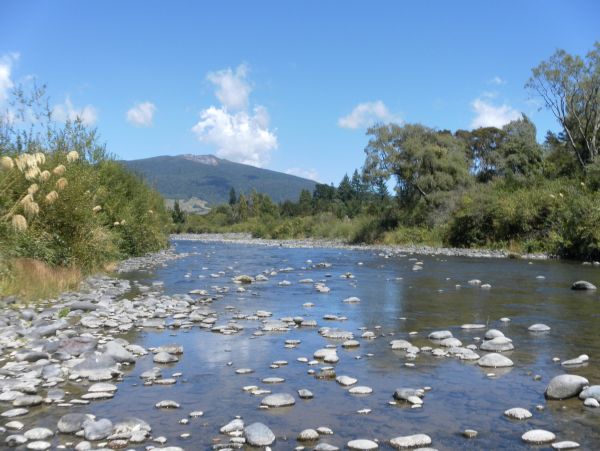
Its been a funny old week on the Tongariro... that " in between time " in the fishing calender that we experience every year. This is when things becomes a little more difficult no matter what we try.
I found the fishing got harder as the week went on but kept at it because you sense good times are just around the corner and from now on you never know when a few fish will decide to go for it.
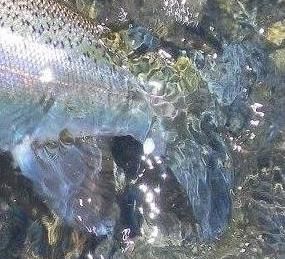 At the start of the week the threat of rain saw some small runs move through. But with other things on their minds they kept on going and disappeared as quickly as the showers. At the start of the week the threat of rain saw some small runs move through. But with other things on their minds they kept on going and disappeared as quickly as the showers.
You can already see signs of spawning activity dotted along the river. The redds stand out against the algae covered river-bed as clean patches where rainbow hens have excavated the gravel with their anal fins.
With no meaningful rainfall for months the subsequent low flows have allowed algae to grow unchecked throughout the summer.
At the moment its wise to examine your nymphs after every drift to make sure they haven't picked up an extra green tail which will arouse suspicion and put the fish off.
When its like this anglers understandably find this stuff a real pain but algae are important in helping support the well being of host waterways and they also have an impact on global climatic conditions. The Department of Conservation web-site explains why :
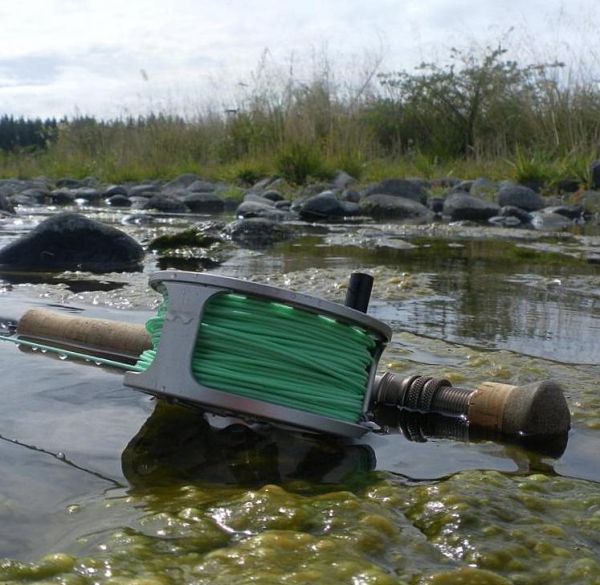 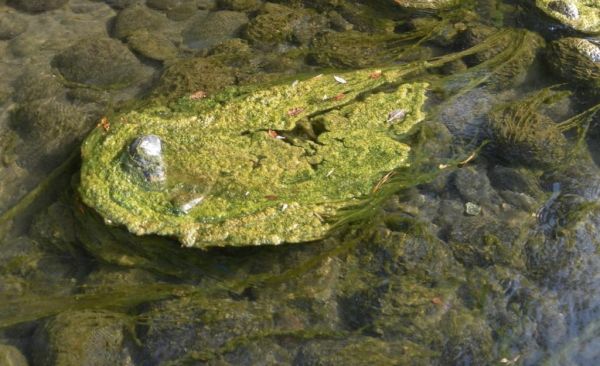
ALGAE
Green slime and brown scum on stream beds is usually regarded as an unattractive nuisance however, it is a vital part of stream ecosystems. Although algal growths can often be seen in the water, a microscope is required to appreciate their beauty and complexity.
WHAT ARE ALGAE?
Algae are simple, aquatic, plant-like organisms that do not have true roots, stems and leaves. Many are single-celled so can only be seen using a microscope, while others grow in filaments or mats that are quite conspicuous. Algae have chlorophyll and can make their own food through the process of photosynthesis.
WHY ARE ALGAE SO IMPORTANT?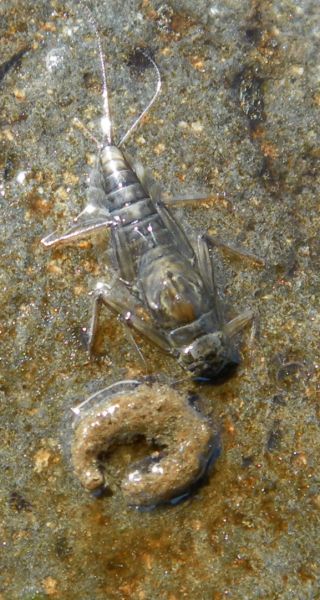
Algae produce oxygen as a waste product of photosynthesis. Cyanobacteria are amongst the most ancient forms of life and they have been contributing oxygen to the world’s atmosphere for the last three billion years.
Cyanobacteria are able to fix nitrogen from the atmosphere. All organisms require large amounts of nitrogen for their metabolism and cyanobacteria play an important role in making atmospheric nitrogen available in nutrient cycles.
Algae help to ‘purify’ water by absorbing nutrients and heavy metals from streams and rivers.
Algae are the basis of most aquatic food webs. They are food for many small aquatic invertebrates, and in turn, these small creatures are food for larger animals such as fish.
Algae also provide important habitats for invertebrates and fish. Without organisms that can capture energy from the sun by photosynthesis, none of the higher organisms would exist.
Algae can be valuable indicators of environmental quality. Many are sensitive to changes in pH, in nutrient levels or in temperature. Monitoring species abundance and composition can be useful to identify changes in water quality caused by changes in surrounding land use.
WHERE ARE ALGAE FOUND?
Freshwater algae are found growing underwater on rocks and mud in streams and rivers. They are usually more abundant in slower streams than in fast flowing rivers. Didymo, the exotic pest alga commonly known as ‘rock snot’, is one of the few species that grow well in swift rivers. However, even didymo cannot withstand turbulent flood waters.
WHAT TYPES OF FRESHWATER ALGAE ARE THERE?
The main groups of algae found in streams are the green algae (Chlorophyta), red algae (Rhodophyta), blue-green algae (Cyanobacteria) and diatoms (Bacillariophyta).
Green algae: Green algae often look like strands of green hair flowing in the current. Spirogyra is a common green alga. Under a microscope its chloroplasts are clearly seen as spirals.
Red algae: Red algae, such as Audouinella, uses a different part of the light spectrum it is able to grow in places where the other algae can’t, so tends to be found in shaded places such as under rocks or banks.
Blue-green algae: The chlorophyll in the alga Cyanobacteria is not in chloroplasts but diffused throughout the cell. Pigments, other than chlorophyll, contribute to their colouration so cyanobacteria are not usually bright green. Nostoc is another cyanobacteria that is often conspicuous in streams. It looks like bubbles of firm jelly attached to the rocks. The ‘bubbles’ are masses of small chains of cells.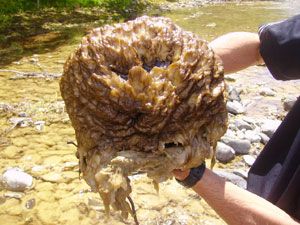
Diatoms: Mats of brown growth, fluffy masses or slimy layers on rocks are some of the ways diatoms appear to the naked eye.
Gomphoneis forms thick, glistening, light-brownish mats on river substances and is often mistaken for didymo.
However, didymo has much larger cells and grows in tougher, more fibrous mats. See image right.
CAN ALGAE BE BAD?
Excessive nutrients in runoff from land used for intensive agriculture will alter the natural composition of algae in streams and rivers. If the natural balance is disturbed algal blooms may occur, causing undesirable discolouration, scum and odours and even toxic effects.
Didymo (Didymosphenia geminata) is an example of an introduced organism that has grown into unsightly mats over stream and river bottoms. In many places it has out-competed the native algae and destroyed invertebrate and fish habitat. Be fastidious in taking measures to stop the spread of Didymo. Follow the simple rules – Check, Clean, Dry – when moving from one waterway to another.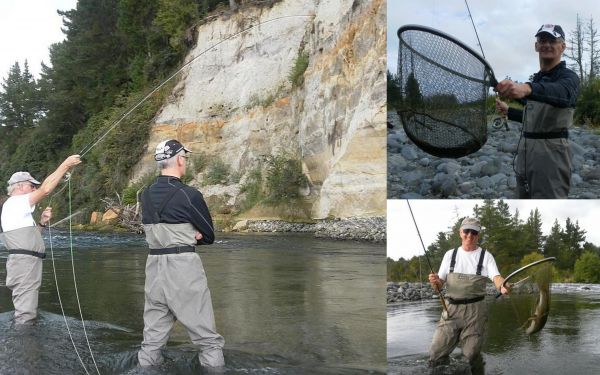 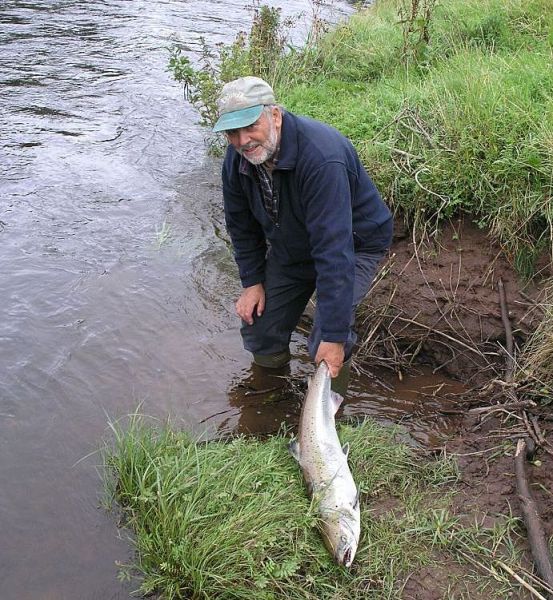 On Wednesday I fished with Colin and Clive Cranfield. Clive { in the dark top ) was on holiday from the U.K. visiting his big brother for a special birthday. It would be rude to give his age away but between you and me he won't see fifty nine again. They're originally from South Wales although its many years since either of them lived there. In fact there's a bit of a Welsh theme this week because my ole mate Terry is still here and we've had a couple of days together chasing browns. Unfortunately hooking them is only half the battle and so far its browns three ... Taffys nil. On Wednesday I fished with Colin and Clive Cranfield. Clive { in the dark top ) was on holiday from the U.K. visiting his big brother for a special birthday. It would be rude to give his age away but between you and me he won't see fifty nine again. They're originally from South Wales although its many years since either of them lived there. In fact there's a bit of a Welsh theme this week because my ole mate Terry is still here and we've had a couple of days together chasing browns. Unfortunately hooking them is only half the battle and so far its browns three ... Taffys nil.
Back home Terry normally gets his fly fishing fix from a beat on the River Usk { Afon Wysg in Welsh }. Before its decline in the sixties it was well known as a wild brown trout fishery and thanks to the hard work of local conservation groups brown trout are again on the increase. But its better known nowadays as a salmon river and from April onwards, especially during spate conditions, fish like the tiddler Terry has just landed run this popular Welsh river.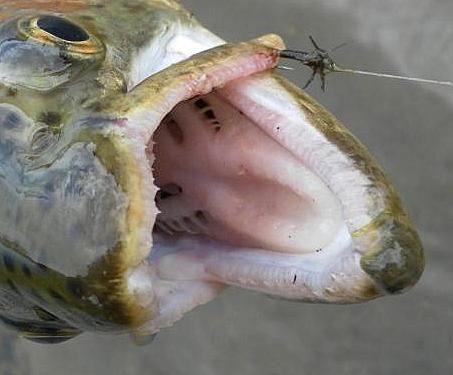 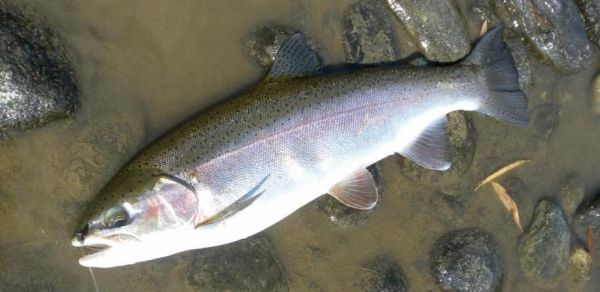 Targeting browns is probably your best bet at the moment, unless your lucky enough to drop on some rainbows sneaking up. I dusted off the globugs for an hour or two after the rain but only took one fish on them. Targeting browns is probably your best bet at the moment, unless your lucky enough to drop on some rainbows sneaking up. I dusted off the globugs for an hour or two after the rain but only took one fish on them.
There are a few showers forecast for next weekend but nothing much. Its inevitable that we will eventually get some rain and this combined with cooler Autumn temperatures will be the catalyst for some much better fishing.
Until then keep at it guys.
Tight lines.
Mike |
|
|
| Back to Top |
|
|
|
|
|
|
|